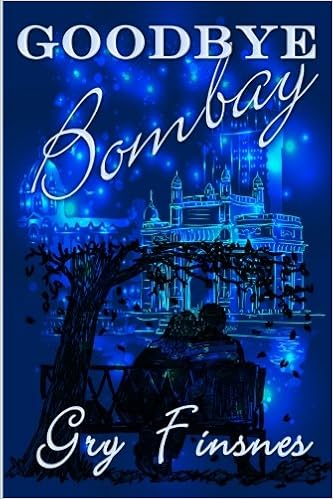Greetings, commies!
How about some heavy-duty forbidden interracial love the week after Valentine's Day? You're in the right place! Today's guest of honor is Gry Finsnes. Last year I interviewed her about her debut novel Vanished in Berlin set during WWII. She's back with a new gem Goodbye Bombay.
Synopsis:
Bombay in 1980, India’s business centre, was a swirl of parties mixing
all religions and nationalities. The Norwegian lawyer Christine is
married but falls in love with the good-looking Parsee Zarin. They meet
in a houseboat in Srinagar and declare their love in the Mogul gardens,
but this is just the beginning of a dramatic series of events leading
them to the beaches of Goa and the tea gardens of Darjeeling. Twenty
years later Christine tells her story to a friend in England when a
stranger turns up.
My thoughts:
"Goodbye Bombay" is Gry Finsnes' second novel that deals with the same issues as her debut novel "Vanished in Berlin" - ethnic and religious identity, loyalty to one's roots versus urges of the heart. Both novels feature major cities in the titles.
What's captivating and stimulating about "Goodbye Bombay" is the setting and the cosmopolitan cast. It's important to bear in mind that this is NOT a novel about "real" India, as experienced by the majority of the Indian population. The beaches of Goa and the tea gardens of Darjeeling are famous romantic destinations for western tourists and Indian elite, but they are off limits to the members of the lower castes.
As a professional western woman in 1980, the protagonist Christine can allow herself certain liberties that women in more dependent situations could only fantasize about, including entertaining the idea of an extramarital affair with a man from a different ethnic group. I don't think I need to go into the reasons why a Norwegian woman would be fascinated by an Indian man.
Christine is not making an effort to integrate into the Indian community. She sticks out as what she is - a professional Western woman. She is not about to kick off her high heels and walk barefoot through an impoverished village. Her young daughter seems to have a more organic, more intuitive connection to India. I commend the author of avoiding the major cliches that some authors fall into when depicting cultural clashes. Christine is aware of her inability to organically integrate into her surrounding, but there is no "culture shock" per se. Christine is blunt, analytical, a little callous, perhaps. She's not a star-struck wide-eyed ingenue who has a guilt attack at the sight of starving children on the street.
I also commend the author for not giving into the pressure of creating a universally likable ingenue that all readers will root for. She's not afraid of depicting Christine as arrogant, entitled and self-serving.
My only main criticism is the cover. Too much blue, not enough contrast. If you look close enough, you can see what looks like a couple sitting on a bench, looking at the city in front of them. It's neither telling nor misleading. For a novel of that literary caliber I would've liked to see something more minimalist and/or symbolic.


Thank you Marina!
ReplyDeleteAny time, my dear!
Delete